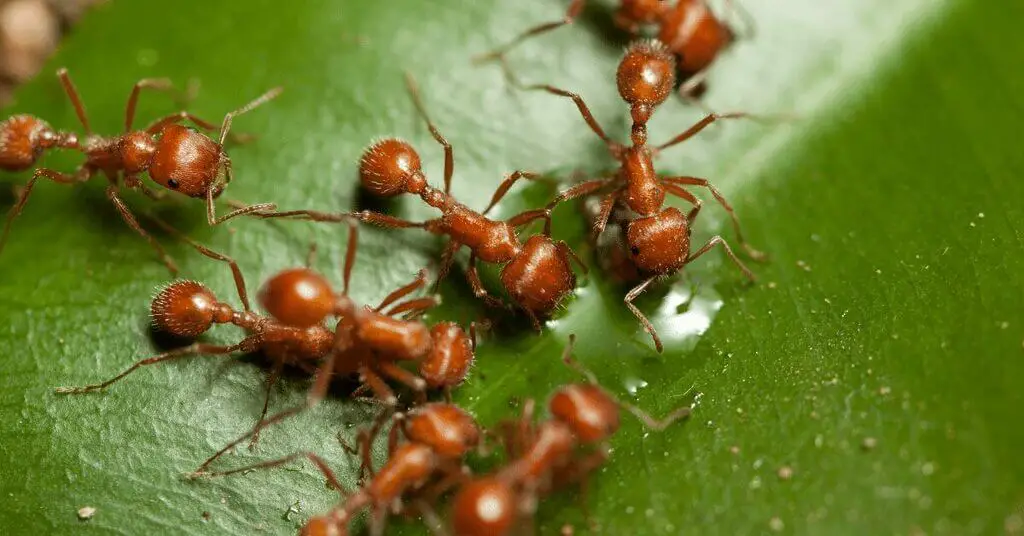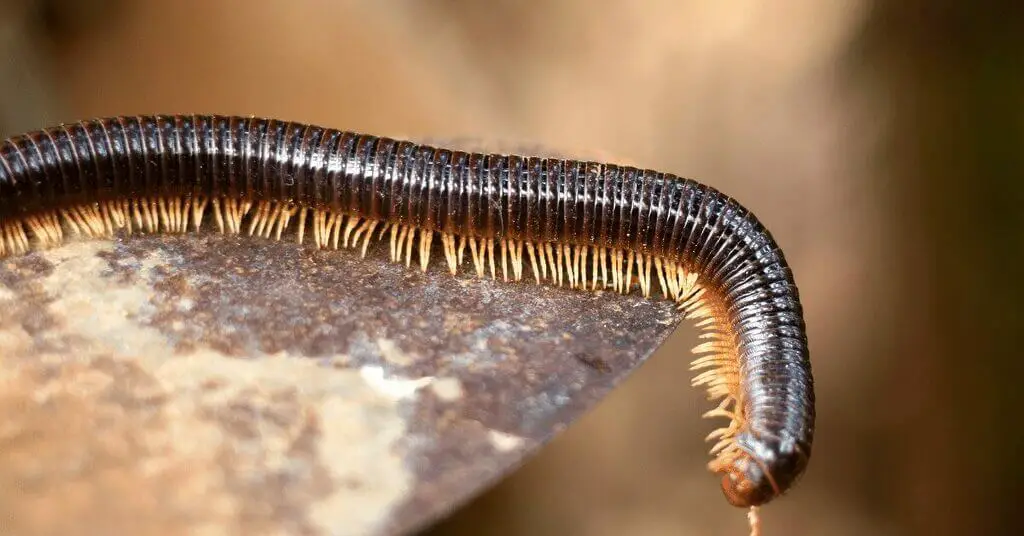Insects and arachnids are some of the most diverse and fascinating creatures on Earth, with over a million known species and countless more yet to be discovered. From the tiny, industrious ants to the graceful, soaring dragonflies, these creatures play crucial roles in our ecosystems and have captivated the curiosity of scientists and nature enthusiasts alike.
However, many people find insects and arachnids to be creepy, dangerous, or simply a nuisance. Some species, such as termites and locusts, can cause significant damage to homes and crops, while others, like certain spiders and centipedes, are known for their venomous bites.
In this article, we will discover the incredible world of ants, spiders, termites, dragonflies, centipedes, millipedes, and locusts, shedding light on their unique characteristics, behaviors, and the important roles they play in our world.
Ants

Ants are social insects that live in colonies, ranging in size from a few dozen to millions of individuals. These tiny creatures play a crucial role in maintaining the balance of ecosystems by aerating soil, dispersing seeds, and serving as both predators and prey in food chains.
While most ants are harmless, some species can pose a serious threat to humans due to their painful stings or bites. The most dangerous types of ants include:
- Bullet Ant: Found in the rainforests of Central and South America, the bullet ant is known for its extremely painful sting, which can last up to 24 hours.
- Fire Ant: Native to South America and now found in many parts of the world, fire ants are notorious for their painful stings and aggressive behavior when their nests are disturbed.
- Bulldog Ant: Endemic to Australia, bulldog ants are among the largest ants in the world and possess a potent venom that can cause severe allergic reactions.
- Jack Jumper Ant: Also native to Australia, jack-jumper ants are known for their aggressive nature and painful stings, which can cause anaphylactic shock in some individuals.
- Army Ant: Found in various regions worldwide, army ants are known for their nomadic behavior and ability to overwhelm and consume small animals with their large numbers.
To learn more about these dangerous ant species, their habitats, and how to avoid them, check out our in-depth article on the Most Dangerous Types of Ants.
Spiders
Spiders are air-breathing arthropods belonging to the class Arachnida, characterized by having eight legs, chelicerae with fangs capable of injecting venom, and spinnerets that extrude silk. There are over 46,700 known species of spiders with diverse behaviors and appearances.
Spiders are predators, primarily feeding on other arthropods, especially insects. They use various strategies to capture prey, such as trapping them in webs, lassoing with sticky bolas, or mimicking prey. Some spiders are active hunters, while others rely on silk snares or webs to catch their prey.
Types of Spiders:
- Black Widow Spider: Known for their distinctive appearance, black widow spiders are among the most poisonous spiders in North America but rarely cause fatal bites.
- Brown Recluse Spider: Timid yet poisonous, brown recluse spiders prefer dark, hidden spaces and can attack live prey.
- House Spider: These spiders have a circular abdomen, are smaller in size, and congregate in hidden areas to create egg sacs and draglines.
- Jumping Spiders: Short and stout jumping spiders are known for their agility in hunting and their ability to jump up to 50 times their body length.
- Wolf Spiders: Large and hairy with excellent eyesight, wolf spiders are agile hunters found on the ground or in burrows underground.
Spiders play a crucial role in ecosystems by controlling pest populations like mosquitoes and flies. While all spiders produce venom, most species are not harmful to humans. Understanding common spider types and their habits can help coexist with these beneficial creatures and manage any potential infestations effectively.
Termites

Termites are known for their ability to break down dead plant material, such as wood and leaf litter, which helps recycle nutrients back into the soil. However, their wood-eating habits can also cause significant damage to human structures, making them a concern for homeowners.
There are four main types of termites, each with its own unique characteristics and habitat preferences:
- Subterranean Termites: These termites live underground and build extensive tunnel networks to access food sources. They are the most common type of termite found in the United States and are responsible for the majority of termite-related damage to homes.
- Drywood Termites: Unlike subterranean termites, drywood termites do not require contact with the soil and can live entirely within dry wood. They are commonly found in coastal regions and can cause significant damage to wooden structures.
- Dampwood Termites: As their name suggests, damp wood termites prefer moist, decaying wood and are often found in forests or near water sources. While they don’t typically infest homes, they can damage wooden structures with high moisture content.
- Mound Builders: These termites are known for constructing large, impressive mounds that can reach heights of up to 30 feet. Mound builders are primarily found in Africa, Australia, and South America and play a crucial role in aerating and enriching the soil.
To learn more about these different types of termites, their behaviors, and the signs of an infestation, be sure to read our informative article on the Main Types of Termites.
Dragonflies

Dragonflies are skilled predators, feeding on mosquitoes, flies, and other small insects, helping to control their populations. They are also indicators of healthy water systems, as they require clean water to complete their life cycles.
There are numerous species of dragonflies, each with its own unique colors, patterns, and characteristics. Some of the most beautiful types of dragonflies include:
- Green Darner: One of the largest and most common dragonflies in North America, the Green Darner is known for its vibrant green thorax and blue abdomen.
- Blue Dasher: These small, iridescent blue dragonflies are found near ponds, lakes, and slow-moving streams throughout North America.
- Twelve-spotted Skimmer: Named for the twelve dark spots on its wings, this dragonfly is commonly found near still-water habitats across North America.
- Cardinal Meadowhawk: The Cardinal Meadowhawk is a small, bright red dragonfly that is commonly found in fields, meadows, and near water sources in North America.
- Variegated Meadowhawk: This dragonfly is known for its striking red and yellow coloration and is commonly found in fields, meadows, and near water sources in western North America.
To discover more about these beautiful dragonflies, their habitats, and how to identify them, explore our in-depth article on Types of Beautiful Dragonflies.
Centipedes
These multi-legged arthropods are known for their unique characteristics, such as their venomous claws and their ability to move quickly. Centipedes are predatory creatures that play a role in controlling insect populations in various ecosystems.
There are many interesting types of centipedes found around the world, each with its own distinct features and adaptations. Some of the most intriguing species include:
- Centipede: Commonly found in human dwellings, the House Centipede is known for its long, slender body and numerous legs. Despite their alarming appearance, these centipedes are beneficial, as they feed on household pests like cockroaches and silverfish.
- Scolopendra gigantea: Also known as the Amazonian Giant Centipede, this species is one of the largest centipedes in the world, reaching lengths of up to 12 inches. They are found in the tropical regions of South America and the Caribbean.
- Scolopendra Cataracta: This centipede species is known for its unique ability to dive and swim underwater, making it one of the few amphibious centipedes. They are found in Southeast Asia, primarily in Thailand and Vietnam.
- Scolopendra Galapagoensis: Endemic to the Galapagos Islands, this centipede species is well-adapted to the harsh, volcanic environment. They are known for their dark coloration and potent venom.
- Geophilomorpha: Also known as soil centipedes, these small, worm-like centipedes are found in soil habitats worldwide. They play a crucial role in breaking down organic matter and enriching the soil.
Discover more about these fascinating centipedes, their adaptations, and their roles in ecosystems.
Millipedes

These multi-legged creatures play a vital role in the environment by breaking down dead plant material and enriching the soil. Unlike centipedes, millipedes are primarily herbivores and do not possess venomous claws.
There are numerous marvelous types of millipedes found in the wild, each with its own unique characteristics and adaptations. Some of the most interesting species include:
- Giant African Millipede: As one of the largest millipede species, the Giant African Millipede can grow up to 13 inches in length. These gentle giants are native to the tropical regions of Africa and are popular in the pet trade.
- Flat-backed Millipede: Known for their flattened appearance, Flat-backed Millipedes are found in the tropical regions of Central and South America. They are known to secrete a toxic substance when threatened, which can cause skin irritation and discoloration.
- Rusty Millipede: Native to the eastern United States, the Rusty Millipede is named for its reddish-brown coloration. These millipedes are important decomposers in forest ecosystems, breaking down leaf litter and enriching the soil.
- American Giant Millipede: Found in the southern United States, the American Giant Millipede can grow up to 6 inches in length. They are known for their dark, glossy exoskeletons and their ability to secrete a foul-smelling substance when threatened.
To learn more about these marvelous millipedes, their habitats, and their ecological importance.
Locusts
locusts, which are a type of grasshopper known for their swarming behavior and their devastating impact on agriculture. When locust populations become dense, they can form swarms that consume vast amounts of vegetation, causing significant damage to crops and leading to economic losses.
There are four main types of locusts that are known for their swarming behavior:
- Desert Locust: Found in the deserts of Africa, the Middle East, and Asia, the Desert Locust is one of the most destructive locust species. During plagues, swarms can cover vast areas and consume up to 200,000 tons of vegetation per day.
- Migratory Locust: This species is found in Europe, Asia, and Australia. Migratory Locusts are known for their ability to travel long distances, with swarms capable of covering hundreds of miles in a single day.
- Bombay Locust: Native to India and parts of Southeast Asia, the Bombay Locust is a major agricultural pest in the region. Swarms can cause significant damage to crops like cotton, rice, and sugarcane.
- Australian Plague Locust: Found in Australia, this species is known for its periodic population explosions that can lead to widespread damage to crops and grasslands. Swarms can cover vast areas and are difficult to control once they form.
To learn more about these locust species, their life cycles, and the efforts to control their populations, read our informative article.
Conclusion
The world of insects and arachnids is incredibly diverse and fascinating, with each species playing a unique role in our ecosystems. From the dangerous and venomous ants and spiders to the beautiful and graceful dragonflies, these creatures have evolved remarkable adaptations that allow them to thrive in various environments.
We’ve explored the importance of ants in maintaining the balance of ecosystems, the unique characteristics of tarantulas and jumping spiders, the vital role of termites in recycling nutrients, and the beauty and ecological significance of dragonflies.
Additionally, we have explored the world of centipedes and millipedes, discovering their unique adaptations and their contributions to soil health.

